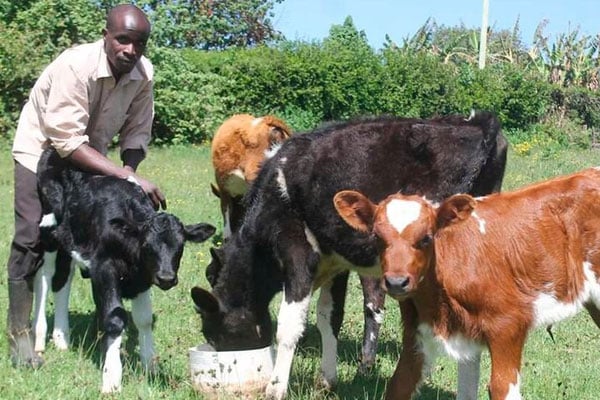Causes and remedies of malnutrition in calves

What you need to know:
- Poor nutrition is when animals are fed way below their requirements while under nutrition is when animals are fed moderately below their requirements.
- Under nutrition is so common that many farmers tell me that dairy cattle naturally can never get fat.
The progressive reduction in land sizes heavily challenges livestock farmers, especially those in milk production. Further, most farmers have little knowledge on the nutritional requirements of livestock.
In many cases, farmers just feed animals for them to get full without regard to the nutritional value of the feed or the mechanics of digestion for the species of livestock. For the farmers in rural areas with adequate rainfall, Napier grass is the staple for cattle, sheep and goats. Farmers are not aware that the materials most readily available to them such as Napier are of little nutritional value to their animals.
Causes of malnutrition
It is no wonder that most dairy cattle, sheep and goats in moderate to high rainfall areas are perpetually malnourished, in poor body condition and of very low production. There are also many animal deaths, especially in calves, due to poor and under nutrition.
Poor nutrition is when animals are fed way below their requirements while under nutrition is when animals are fed moderately below their requirements. Under nutrition is so common that many farmers tell me that dairy cattle naturally can never get fat.
Poor nutrition
Dairy calves particularly suffer from poor nutrition because farmers tend to feel that the animals are denying them the milk revenue. What farmers forget in their quest to maximise milk sale is that the heifer calves are the future of a dairy herd.
Calves tend to be neglected from birth. This affects their growth in terms of weight gain, the length of time to get to reproductive maturity, the adult body weight and the development of the udder.
Due to this long-term or chronic malnutrition, I have encountered farmers who claim to be having a breed they call ‘small friesians’. This is not a breed. It is small-bodied adult friesian cattle whose size has been minimised by lifetime malnutrition.
The so-called ‘small friesians’ have production much lower than their breed average and they tend to have difficulties in calving.
Last week, I had an interesting case of an eight-month-old bull young stock that could not stand. A livestock farmer recently told me on phone, that the calf was in good body condition but had been unable to stand for seven days. I asked the farmer for photographs of the calf in three elevations of the front, side and back. From the photos, the calf was brownish instead of the Friesian black and white. The body was wasted and too small for the age. I presented the case to fourth-year veterinary students on practical training at my clinic. They diagnosed long-standing malnutrition. I concurred with them.
Recovery diet
I conveyed the diagnosis to the farmer and prescribed a recovery diet comprising dairy meal, sweet potato vines, Boma Rhodes hay, high quality mineral salt and sufficient clean drinking water.
I explained to the farmer that calves should be taken good care of from day one of birth. First is to ensure adequate passive transfer of antibodies from the mother is achieved. All calves should receive at least two litres of high-quality, antibody-rich colostrum within six hours of birth. Colostrum feeding should continue until calves are three days old.
Farmers wish to sell most of the milk they get from their cattle. After the period of colostrum feeding, farmers should aim at raising dairy calves in a way that minimises liquid feed consumption, maximises solid feed use, stimulates early rumen development, and weans calves at a relatively young age of usually four to two weeks. Calves reared that way have growth rates that are less than maximal but feed costs are minimal. In addition, the risk of the calves getting intestinal disease after weaning is less than during the liquid feeding period.
When calves are fed in the described manner, the daily weight gains for large dairy cattle breeds are about 400 to 600 grammes for the first three to four weeks of life.





